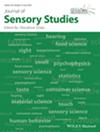The effect of visual deprivation on basic taste modalities
Abstract
In this pilot study, the effects of temporary visual deprivation on sensitivity to the basic tastes in normal sighted subjects were assessed. The sip-and-spit method to assess taste recognition thresholds was applied. The recognition thresholds of five basic tastes were assessed in two conditions: when the participants were blindfolded and when their blindfolds were removed and their eyes were open. In the blindfolded condition, the recognition threshold for sweet taste (saccharose) was lower than in the eyes open condition (means: 2.49 g/L vs. 3.80 g/L, p = .046). For bitter taste, a similar tendency was observed, but the difference did not reach statistical significance (means: 0.11 g/L vs. 0.13 g/L, p = .078). No difference in taste recognition thresholds between these two conditions were noted for salty, sour, and umami. Thus, the impact of temporary visual deprivation on taste experience seems stronger for sweet than for other taste modalities.
Practical Applications
Our pilot study suggests potential applications, for example, re-evaluating sugar content in foods served in dim/dark environments, like cinemas or blind cafés where food is consumed in total darkness. The sweet taste recognition threshold for saccharose being lower by 1.3 g/L in dark surroundings than in lit environments may become an incentive for beverages/snacks/desserts producers to lower sugar content. Coco-Cola Original Taste has 10.6 g of sugar/100 mL, and a 1-L Coca-Cola serving (one of the cinema-sized beverages) contains 106 g of sugar (22 teaspoons). An appropriate reduction of sugar in such beverages should not change their taste/palatability, and may benefit consumers and producers (Valicente et al., 2023, Journal of Sensory Studies, 38(1), e12803). For instance, Coca-Cola/Coke is produced by mixing a relevant syrup with water and adding CO2 (Coca-Cola Original Taste/Zero Sugar/Cherry, etc.); producing an additional syrup with lower than original sugar content seems feasible for a company regularly introducing new products to the market.

 求助内容:
求助内容: 应助结果提醒方式:
应助结果提醒方式:


